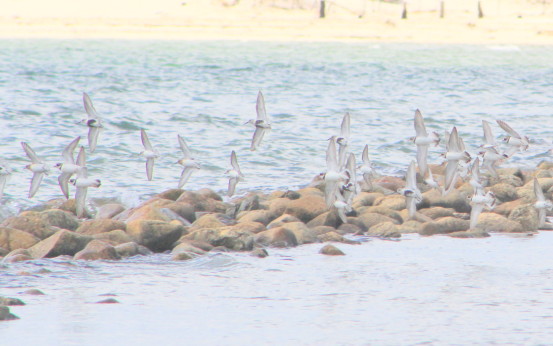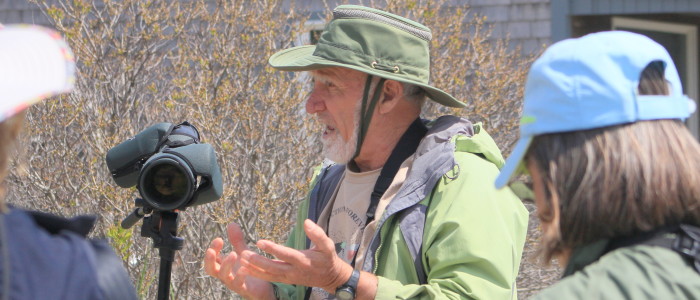
“What draws thousands of migrating shorebirds to Plymouth and Long Beach?” questions Brian Harrington, an ornithologist and our guide and teacher for the day. The students, recent graduates of Goldenrod’s Beach Ambassador program, suggest various answers: marine worms, food, beaches, habitat. “Yes,” says Brian, “it’s the incredible food resource the birds can find in Plymouth, Kingston, Duxbury and Cape Cod Bays – 4,000 hectares of mud and sand flats supporting tons of marine invertebrates, which feed the birds.”
“Imagine if you needed to eat enough to double your weight in a few days or a week,” Brian challenges the group. “You would have to eat as much as possible whenever food was available. That’s what these birds are doing most of the tide cycle. However, right now, the tide is high so most of their foraging grounds are covered in water. That’s why I timed the field trip to coincide with the high tide – it concentrates the birds on the higher ground, where they rest and try to move as little as possible until it’s time to eat again.”
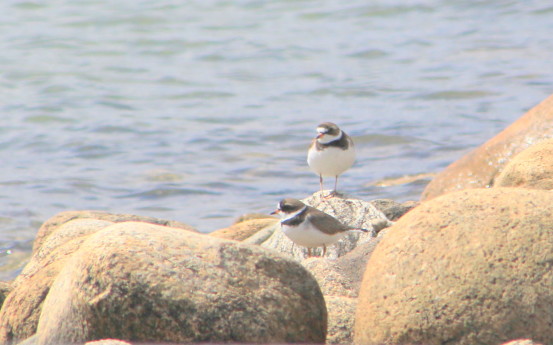
Semipalmated Plovers loaf on the rocks. Plymouth Beach and the surrounding area comprises an important migration stopover spot for them and many other shorebirds. Photo by M. Copson
After an introduction to shorebird ecology, the group travels out to the harbor side of Long Beach to view shorebirds and learn how to identify them. We see a wide variety of birds all within a half-mile of shoreline and some of them do seem rather rotund. Brian tells us that this is a good sign as the birds will have enough fat on their bodies to fuel the next legs of their journeys to their breeding grounds in the Arctic. We are fortunate to be accompanied by photographer Meghan Copson, whose photographs illustrate this post.
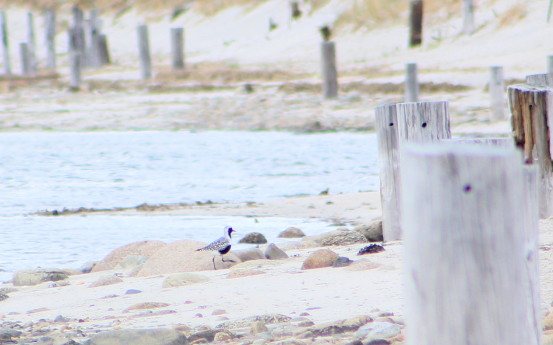
A well-fed Black-bellied Plover will fly another 3,000 miles from Plymouth to its breeding grounds in the Arctic. Photo by M. Copson
“But,” questions Beach Ambassador Mary Lee, “what happens if they don’t have enough fat to go the entire way? Do they just stop wherever they are and nest there?” The answer, unfortunately, is no. Shorebirds will exhaust themselves and simply perish if they cannot make it to their nesting sites. They’ve evolved to travel thousands of miles from specific wintering grounds to specific breeding grounds stopping at critical points (like Plymouth) along the way. (Their incredible migrations are illustrated here). The breeding grounds provide important components such as nesting habitat, ample food for chicks, and potential mates that can’t be found in just any spot where they might stop.
So, we watch the birds from a respectful distance, aware that if we disturb them and they fly they will use up critical fat reserves to lift their heavier-than-usual bodies into the air and travel to another spot.
Of course, Long Beach and the surrounding area boasts of more than migrating shorebirds. There are, combined, hundreds of nesting gulls, terns and shorebirds, such as Least and Common Terns, Laughing and Herring Gulls, Willets and Piping Plovers. We cross over to the Cape Cod Sound side of the beach, where the high wave energy keeps the beaches sandy rather than muddy, to view several of the nesting species, which are behind symbolic fencing – twine supported by poles delineating nesting areas.
“The Town of Plymouth,” announces Brian, “does an excellent job managing the beach for birds and people. The fencing that they erect, as mandated by Federal law, not only protects the Federally threatened Piping Plover, but other nesting species, migrating birds, and the entire beach and dune area – its plants, wildlife and ecological processes. For instance, keeping people off of the dunes allows them to build up, which protects Plymouth Harbor from the onslaught of waves and storm surges that might otherwise harm boats, buildings and docks.”
We search carefully in the protected areas and see several nesting Least Terns and a male Piping Plover on a nest – a sweet way to end the field trip. You, too, can go birding and view some of Plymouth’s natural heritage with Goldenrod Foundation and the Beach Ambassadors on Long Beach. Check our calendar of events for upcoming trips and other events.
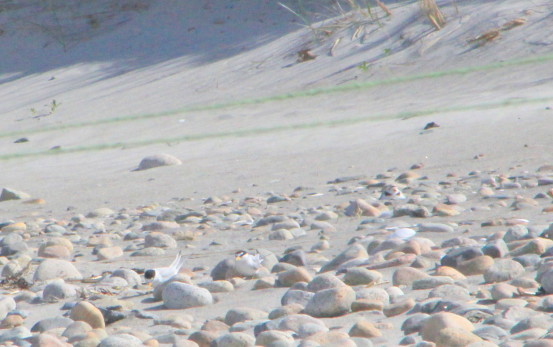
Well camouflaged Least Terns and Piping Plover are sitting on their nests and incubating eggs. Can you find them? Photo by M. Copson
Here is our full bird list:
Brant
Double-crested Cormorant
Osprey
Black-bellied Plover
Semipalmated Plover
Piping Plover
Willet
Sanderling
Dunlin
Least Sandpiper
Semipalmated Sandpiper
Laughing Gull
Herring Gull
Great Black-backed Gull
Least Tern
Common Tern
Mourning Dove
Bank Swallow
Northern Mockingbird
European Starling
Common Grackle
House Sparrow
